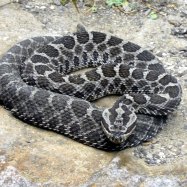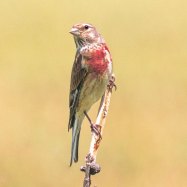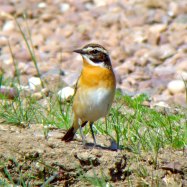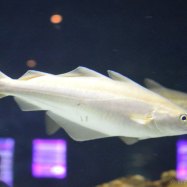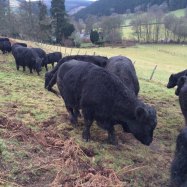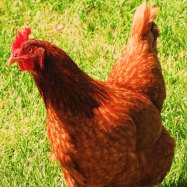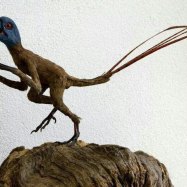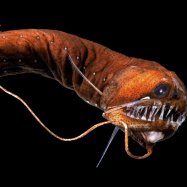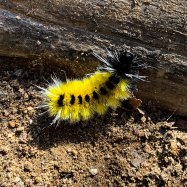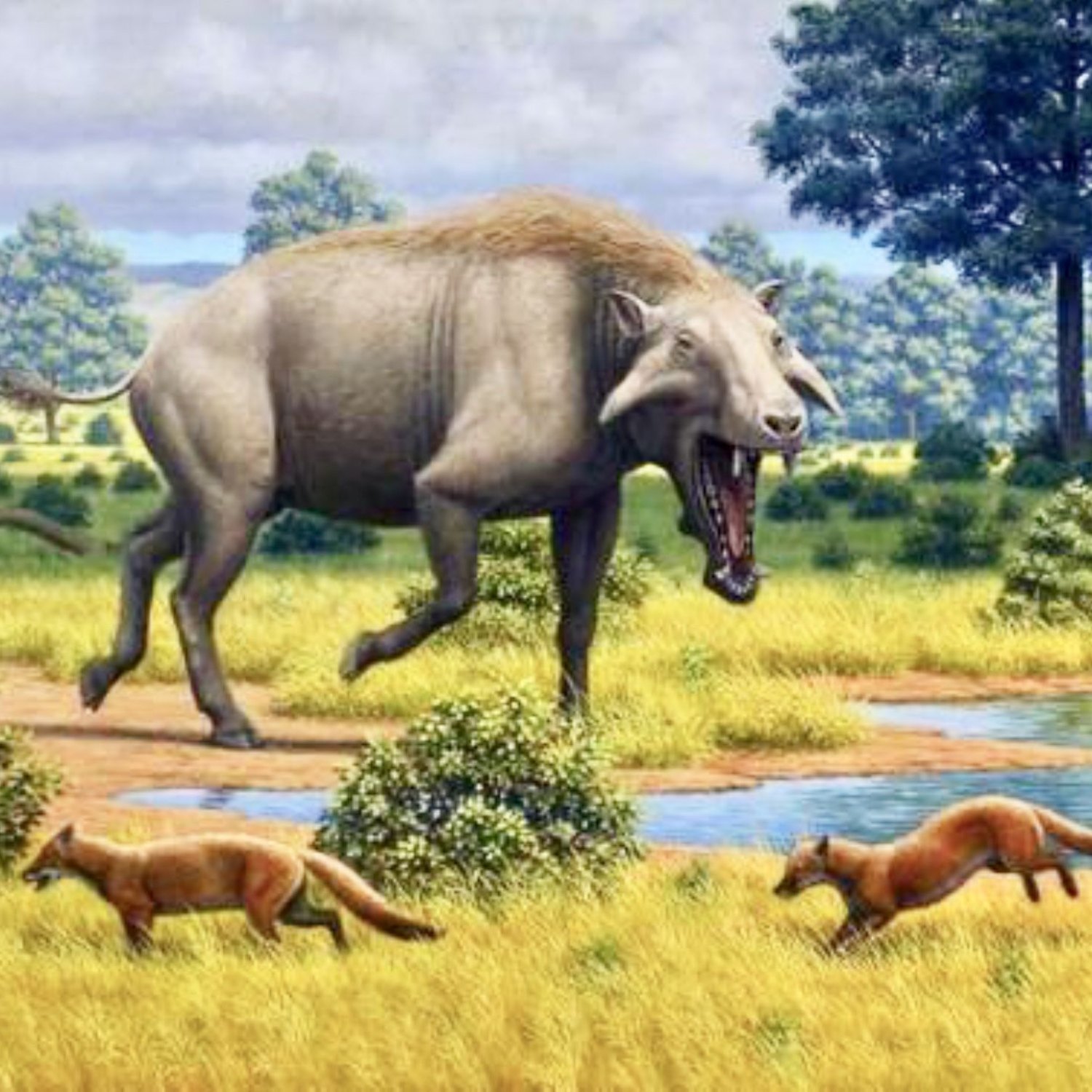
Archaeotherium
Up to 7 feet (2.1 meters)
Archaeotherium, a fascinating creature from the Entelodontidae family, roamed the U.S. millions of years ago. With a body shape resembling a large pig and a hump on its shoulders, it could reach up to 7 feet in length. These fierce animals are now only seen in fossils found in several states, serving as a reminder of their once dominant presence. #Archaeotherium #prehistoricanimals #entelodonts
Animal Details Summary:
Common Name: Archaeotherium
Kingdom: Animalia
Habitat: Woodlands and grasslands
Uncovering the Fascinating World of Archaeotherium
They roamed the woodlands and grasslands of North America, their large and bulky bodies leaving a stamp on the land. With a hump on their shoulders and varying shades of gray, brown, and black, they were known as Archaeotherium - the incredible creatures that once walked the Earth.In this article, we will delve into the intriguing world of Archaeotherium, also known as "the ancient beast".
Archaeotherium, scientifically known as Archaeotherium, belongs to the kingdom Animalia, making them a member of the animal kingdom Archaeotherium. They are also classified under the phylum Chordata, meaning they possess a spinal cord. As members of the class Mammalia, they are warm-blooded and have fur or hair on their bodies. They belong to the order Artiodactyla, which includes hoofed animals such as deer, pigs, and hippos.
The Family of Archaeotherium
Archaeotherium belongs to the family Entelodontidae, which means "perfect teeth." This family includes other large and extinct hoofed animals, commonly known as "pig-like creatures" due to their resemblance to modern-day pigs. They were characterized by their large size, heavy build, and powerful jaws, making them one of the dominant species in their habitat.Habitat and Feeding Habits
Archaeotherium lived during the Oligocene and Miocene epochs, approximately 23 to 8 million years ago. They inhabited the woodlands and grasslands of North America, with fossil records found in various states in the United States.As omnivores, Archaeotherium had a diverse diet, feeding on both plant and animal matter African Bullfrog. Their strong jaws and sharp teeth allowed them to hunt and scavenge for food, making them one of the top predators in their environment. They were known to prey on small mammals, reptiles, and even young and weak larger animals.
The Appearance of Archaeotherium
One of the most striking features of Archaeotherium is their large and bulky body shape. They could grow up to 7 feet (2.1 meters) in length and weigh up to 1400 pounds (635 kilograms). Their massive size was due to their developed muscles and thick bones, making them well-adapted for hunting and defense.Another distinct feature of Archaeotherium was the hump on their shoulders. This hump was believed to be a muscle attachment for their powerful neck and head, allowing them to take down prey with ease.
Interesting Facts about Archaeotherium
- The name Archaeotherium means "ancient beast" in Greek.- Fossil records of Archaeotherium have been found in states such as Nebraska, Texas, and South Dakota.
- They were one of the largest predators in their habitat, alongside other extinct animals like entelodonts and saber-toothed cats.
- The teeth of Archaeotherium were similar to that of modern-day big cats, indicating powerful biting abilities.
- They were so well-adapted to their environment that their extinction was most likely a result of changing landscapes and competition for resources.
The Role of Archaeotherium in Modern Science
The study of Archaeotherium has provided valuable insights and information about the prehistoric world. Fossil remains of these ancient creatures have been analyzed and studied by paleontologists to better understand their behaviors, diet, and habitat. The discovery of Archaeotherium also sheds light on the evolution and diversity of the animal kingdom.In fact, their close relation to modern-day pigs has given scientists a better understanding of the evolutionary history of these animals. This connection has also led to further research into their potential impact on the environment and how their disappearance may have affected the ecosystem.
The Mystery of Archaeotherium's Extinction
Despite their large size and dominance in their habitat, Archaeotherium went extinct during the late Miocene epoch, around 8 million years ago. The exact cause of their extinction remains a mystery, but there are several theories that scientists have proposed.One theory suggests that the changing landscape and climate during the late Miocene may have led to a decline in their food sources, resulting in a decrease in their population. Another theory suggests that competition from other predators such as the dire wolf and the giant short-faced bear may have played a role in their demise.
While the exact reason for their extinction may never be fully understood, the legacy of Archaeotherium lives on through their fossil remains and the knowledge they have provided us about our planet's history.
Archaeotherium - A Fascinating Piece of Prehistoric Puzzle
In conclusion, Archaeotherium, with its imposing size and powerful presence, was truly a remarkable creature. This ancient beast inhabited the woodlands and grasslands of North America millions of years ago, leaving behind a legacy that continues to fascinate and intrigue us today.From their diverse diet to their impressive physical features, this extinct species has captured the attention of scientists and animal enthusiasts alike. And as we continue to uncover more about the prehistoric world, Archaeotherium remains a vital piece of the puzzle in understanding the evolution and diversity of the animal kingdom.

Archaeotherium
Animal Details Archaeotherium - Scientific Name: Archaeotherium
- Category: Animals A
- Scientific Name: Archaeotherium
- Common Name: Archaeotherium
- Kingdom: Animalia
- Phylum: Chordata
- Class: Mammalia
- Order: Artiodactyla
- Family: Entelodontidae
- Habitat: Woodlands and grasslands
- Feeding Method: Omnivorous
- Geographical Distribution: North America
- Country of Origin: United States
- Location: Fossil records found in various states in the U.S.
- Animal Coloration: Varied, including shades of gray, brown, and black
- Body Shape: Large and bulky with a hump on the shoulders
- Length: Up to 7 feet (2.1 meters)
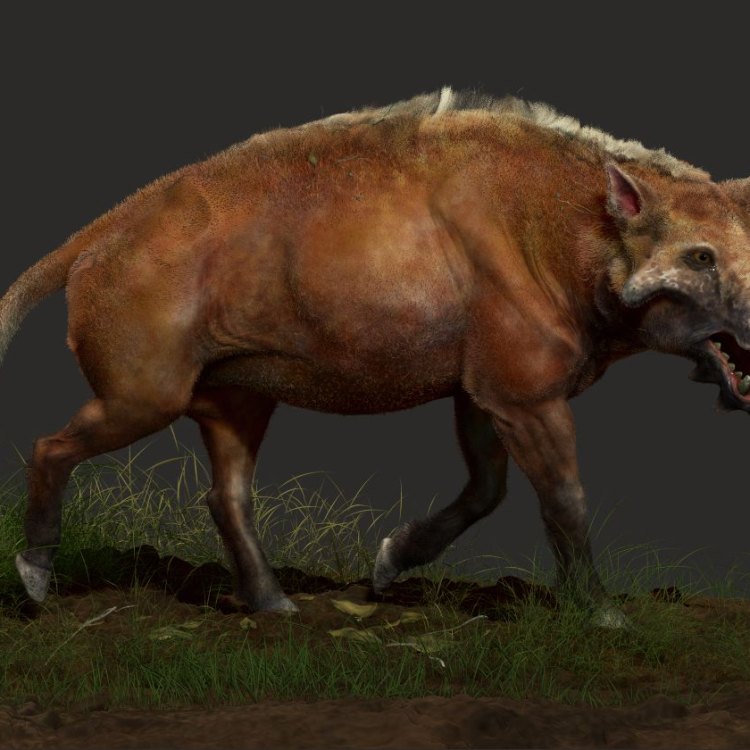
Archaeotherium
- Adult Size: Large
- Average Lifespan: Unknown
- Reproduction: Viviparous
- Reproductive Behavior: Unknown
- Sound or Call: Unknown
- Migration Pattern: Unknown
- Social Groups: Unknown
- Behavior: Solitary
- Threats: Extinct
- Conservation Status: Extinct
- Impact on Ecosystem: Unknown
- Human Use: None
- Distinctive Features: Powerful jaws, large canines, and sharp molars
- Interesting Facts: 1. Archaeotherium was an ancient pig-like mammal that lived during the Eocene and Oligocene epochs. 2. It is often referred to as the "killer pig" due to its large size and predatory behavior. 3. Archaeotherium had long, curved canines and sharp molars, which were used for tearing meat and grinding plant material. 4. Fossil evidence suggests that these animals were capable of hunting and scavenging. 5. They had a hump on their shoulders, similar to modern-day musk oxen. 6. Archaeotherium is considered an ancestor of modern-day pigs and peccaries. 7. These animals became extinct around 30 million years ago.
- Predator: Unknown
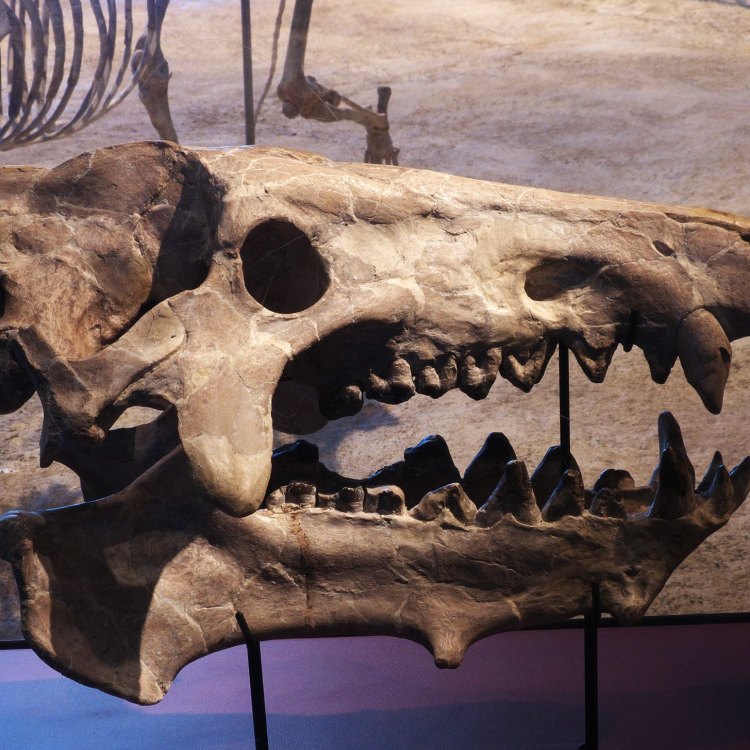
Archaeotherium
The Ferocious "Killer Pig" of the Ancient World: The Fascinating Archaeotherium
Deep in the annals of prehistoric history, there existed a creature that was both feared and revered. It was a large, powerful pig-like mammal with a fierce look that could send shivers down anyone's spine. With its strong jaws, sharp teeth, and ferocious demeanor, it ruled the ancient world, earning the name "killer pig." This creature was Archaeotherium, an extinct genus of mammal that roamed the Earth during the Eocene and Oligocene epochs PeaceOfAnimals.Com. In this article, we'll uncover the fascinating history and unique features of this ancient predator.Archaeotherium, meaning "ancient beast," was first discovered in the late 19th and early 20th centuries, and since then, it has captured the imaginations of paleontologists and animal enthusiasts alike. Fossil evidence suggests that these animals lived in North America, Europe, and Asia, making them one of the few mammal species found on multiple continents during the Eocene and Oligocene periods.
The Killer Pig's Physical Characteristics
Archaeotherium was a mammal of large proportions, with an adult size comparable to that of a modern-day rhinoceros or hippopotamus. These creatures could grow to be around 2.5 meters in length and weigh up to 650 kg. Their bodies were heavy and robust, supported by short but sturdy legs. They had a thick and heavy skull with a pronounced sagittal crest, indicating strong jaw muscles.One of the most distinctive features of Archaeotherium was its powerful jaws Amur Leopard. They were equipped with long and curved canines, used for tearing meat and defending against predators. These canines, combined with sharp molars, enabled Archaeotherium to have a diverse diet, incorporating both meat and plant material. These teeth were also an essential tool for hunting and scavenging, as they allowed the animal to crack open bones and tear through flesh.
Another unique feature of Archaeotherium was the hump on its shoulders, similar to that of modern-day musk oxen. The function of this hump is still unknown, but it is believed to have helped these creatures survive in harsh environments. The hump may have stored fat reserves which could sustain the animal during lean times, similar to how a camel's hump works.
Behavior and Lifestyle
One aspect that remains a mystery about Archaeotherium is its behavior and lifestyle. This is mainly due to the lack of fossil evidence and the challenge of studying the behavior of an extinct animal. However, based on their physical characteristics and the environments they lived in, scientists have come up with a few theories about their behavior.It is believed that Archaeotherium was a solitary animal, not living in social groups or packs. They were likely to have a hierarchical social structure, with dominant males controlling the group. This theory is supported by the presence of a prominent sagittal crest in males, as seen in modern-day dominant mammals.
As for their reproduction, it is known that Archaeotherium was viviparous, meaning they gave birth to live young. However, the details on their reproductive behavior and mate selection are still unknown. It's speculated that during the mating season, males would compete for the right to mate, similar to other mammal species.
The "Killer Pig's" Impact on the Ecosystem
Archaeotherium was a top predator in its ecosystem, meaning it played a crucial role in maintaining balance and diversity. They were capable of hunting and scavenging, which allowed them to control the population of other herbivorous animals and clean up carcasses. This behavior was essential in preventing the spread of disease and ensuring the survival of other species.However, the extinction of Archaeotherium around 30 million years ago had a significant impact on the ecosystem. Without the presence of a top predator, the population of herbivorous animals would have likely increased, leading to overgrazing and competition for resources. This could have caused significant changes in the plant life and disrupted the delicate balance of the ecosystem.
Human Use and Conservation Status
Unlike many other prehistoric creatures, Archaeotherium had no known use for humans. As they went extinct millions of years ago, there is no evidence of any interaction between humans and these ancient predators. They were also not domesticated, unlike their descendants, modern-day pigs.As for their conservation status, Archaeotherium is considered to be extinct. Fossil evidence suggests that these animals disappeared from the Earth around 30 million years ago due to unknown reasons. However, because of the lack of complete evidence and studies, there is still much to be learned about their extinction.
Interesting Facts about Archaeotherium
1. Archaeotherium was an ancient pig-like mammal that lived during the Eocene and Oligocene epochs.2. It is often referred to as the "killer pig" due to its large size and predatory behavior.
3. Archaeotherium had long, curved canines and sharp molars, which were used for tearing meat and grinding plant material.
4. Fossil evidence suggests that these animals were capable of hunting and scavenging.
5. They had a hump on their shoulders, similar to modern-day musk oxen.
6. Archaeotherium is considered an ancestor of modern-day pigs and peccaries.
7. These animals became extinct around 30 million years ago.
In Conclusion
Archaeotherium, the "killer pig" of the ancient world, was a fascinating and fearsome creature. With its powerful jaws, large canines, and sharp molars, it was a top predator that lived in North America, Europe, and Asia during the Eocene and Oligocene epochs. Although much of its behavior and lifestyle are still unknown, the unique features and interesting facts about Archaeotherium continue to capture the imagination of humans, even millions of years after its extinction.
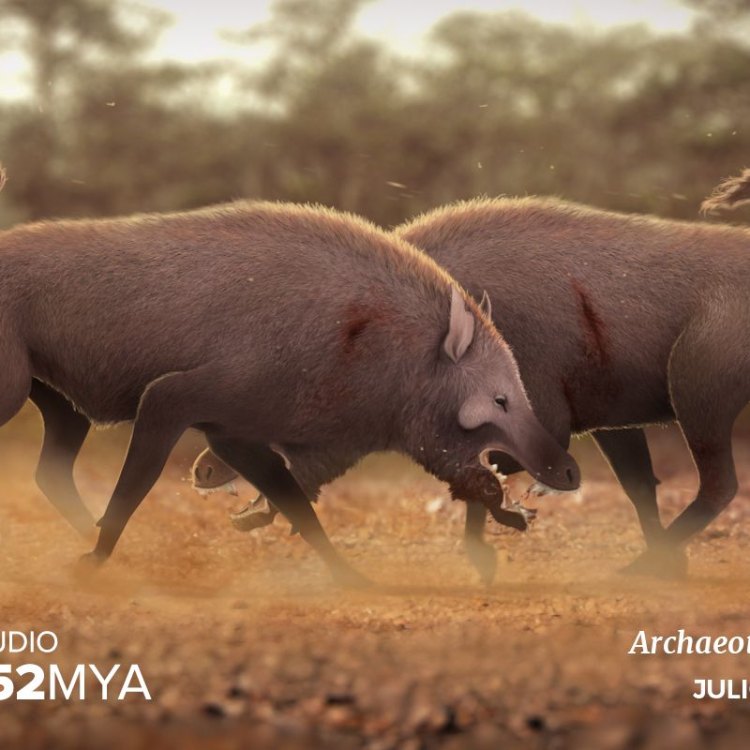
Uncovering the Fascinating World of Archaeotherium
Disclaimer: The content provided is for informational purposes only. We cannot guarantee the accuracy of the information on this page 100%. All information provided here may change without prior notice.


